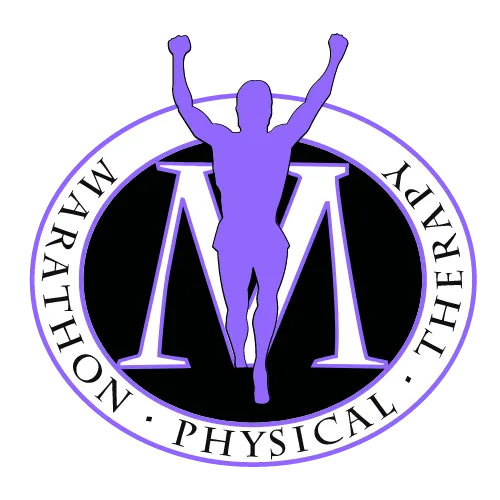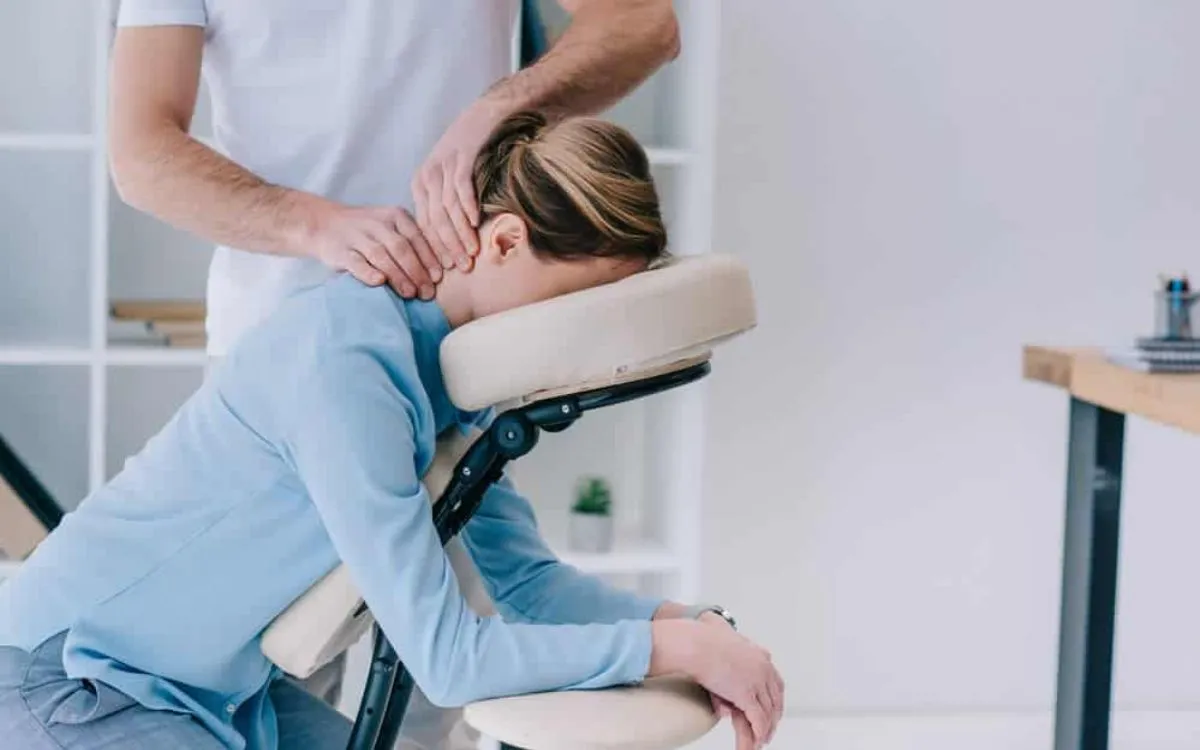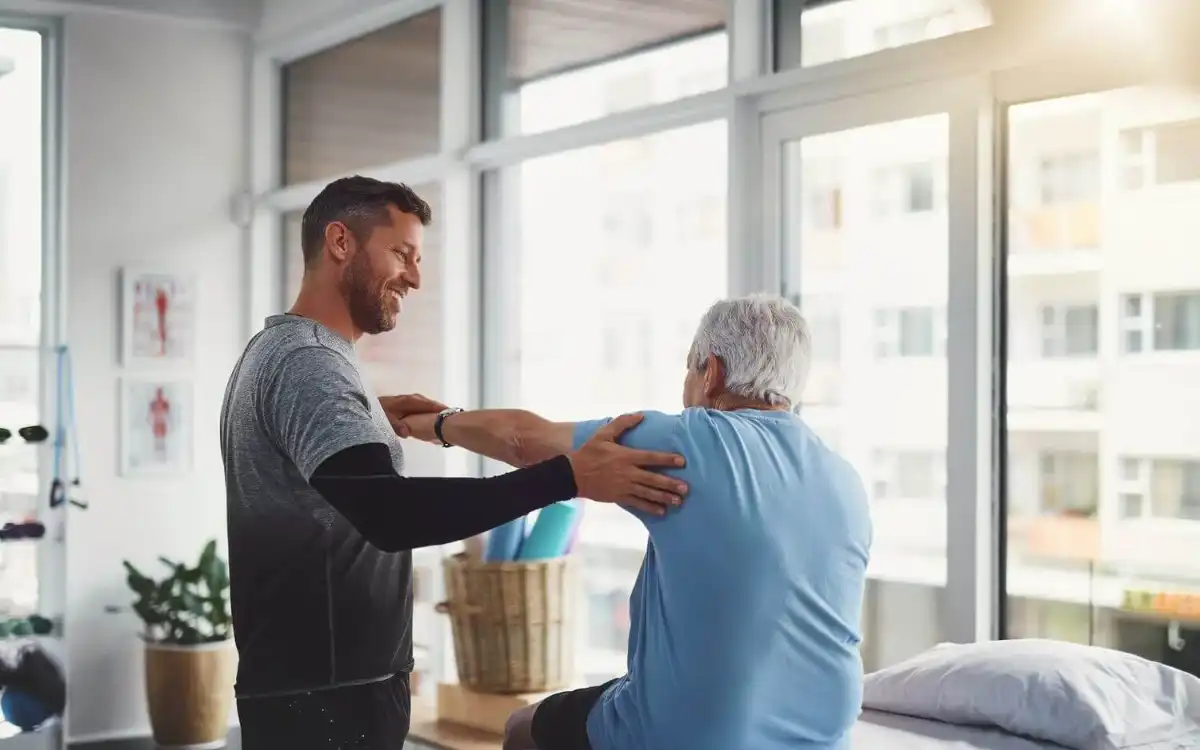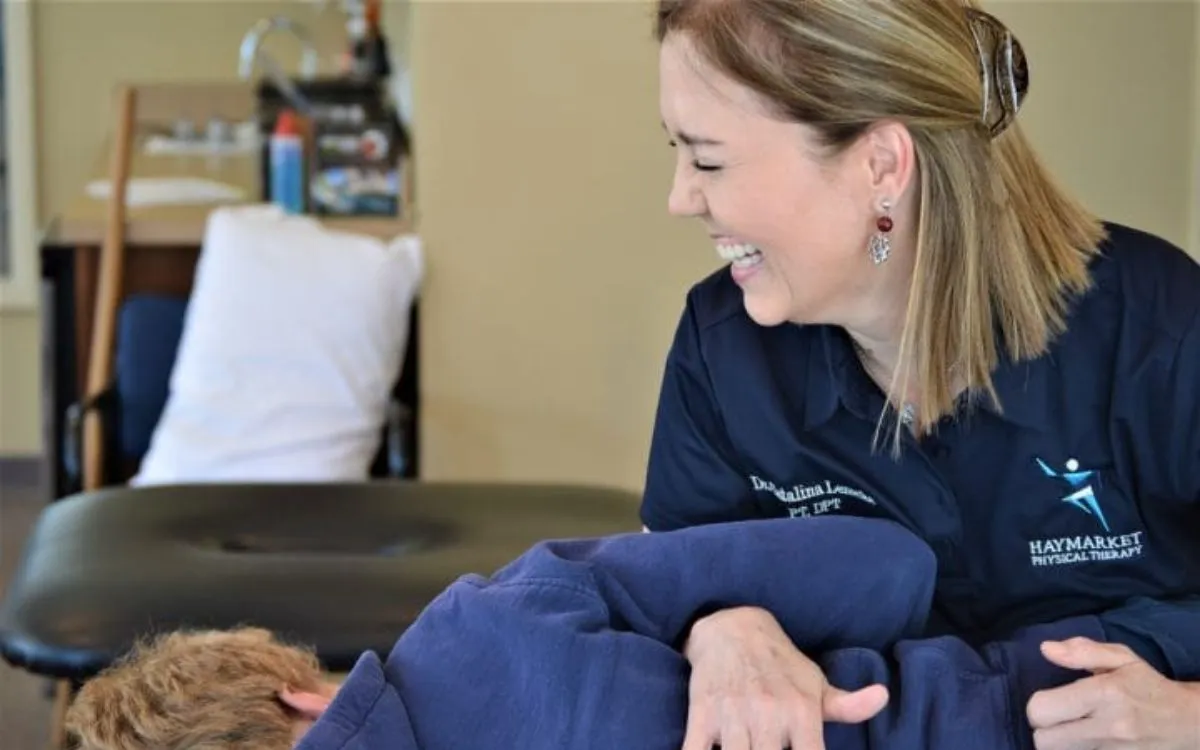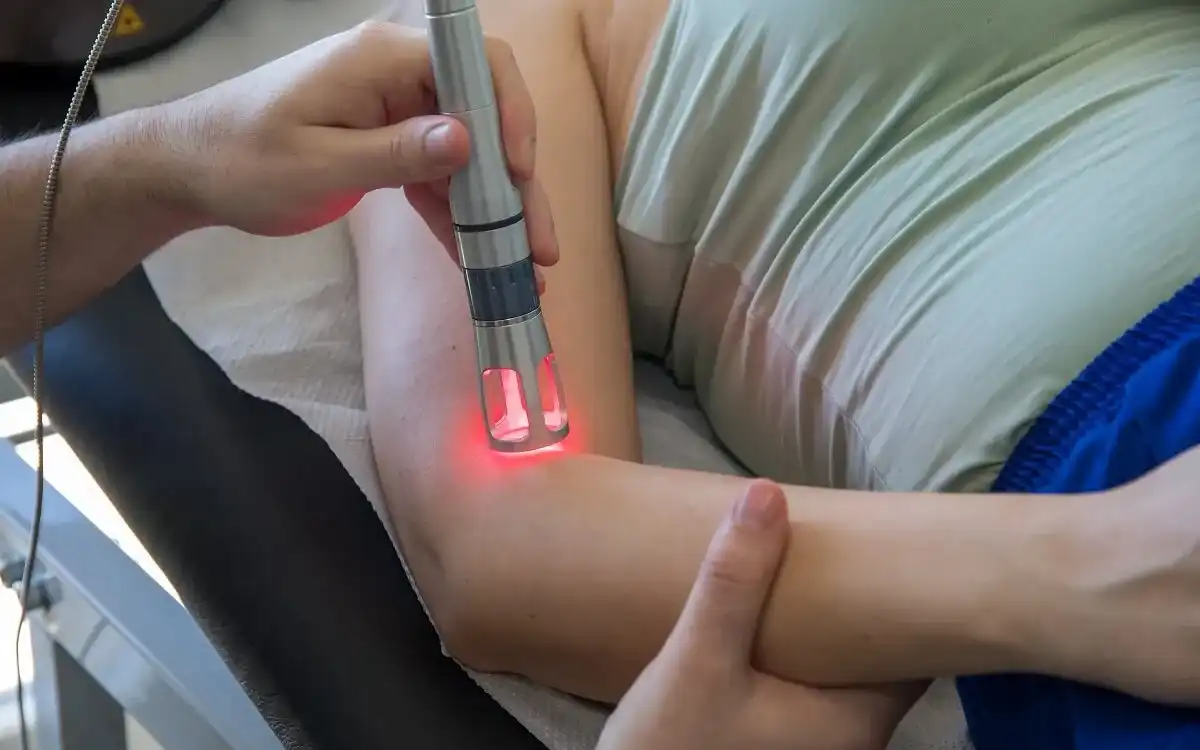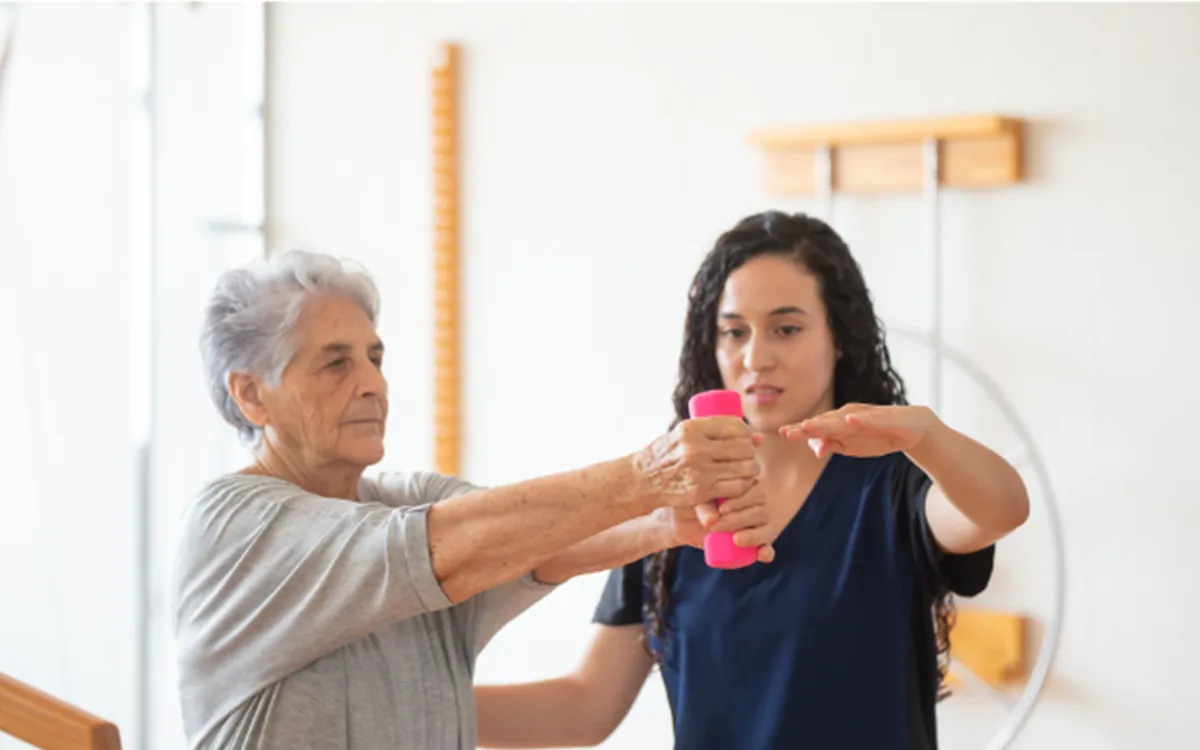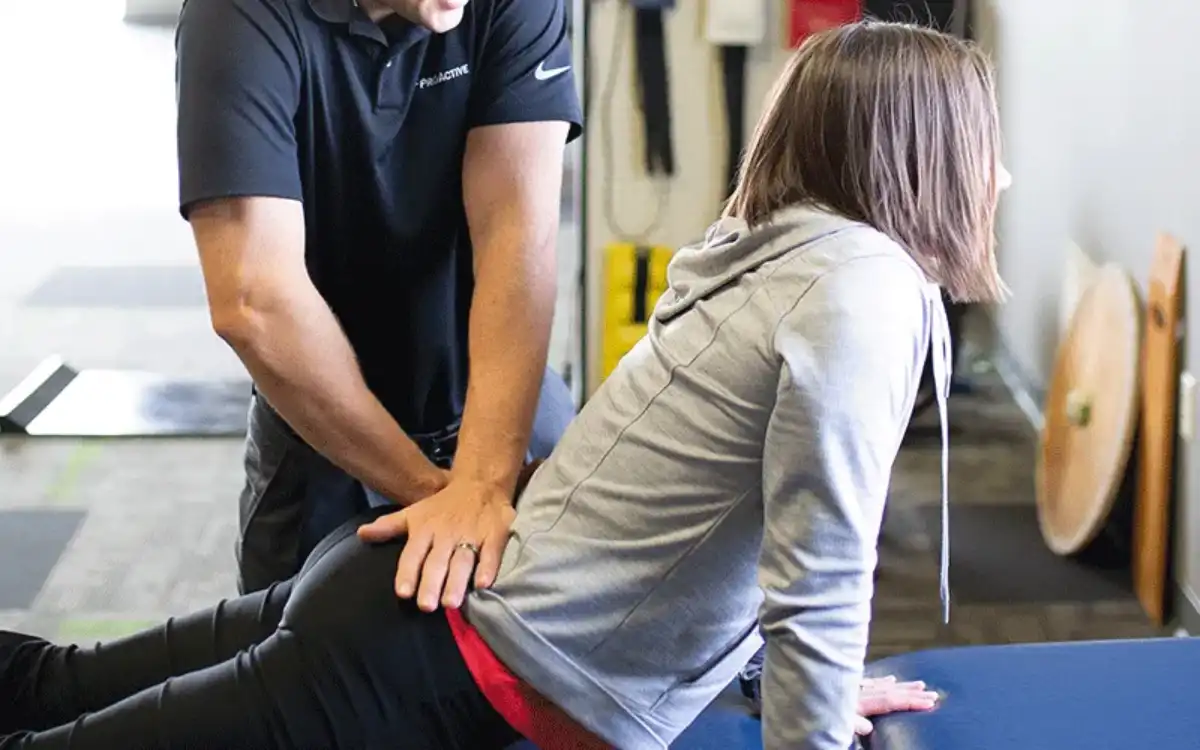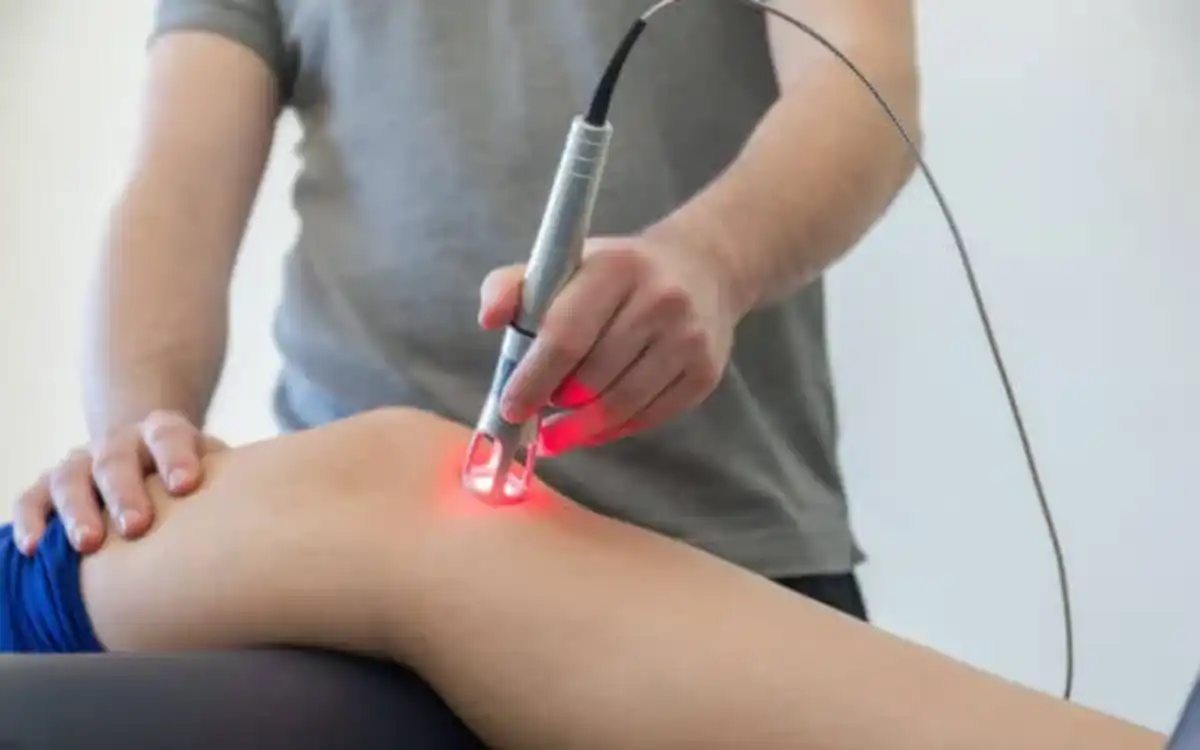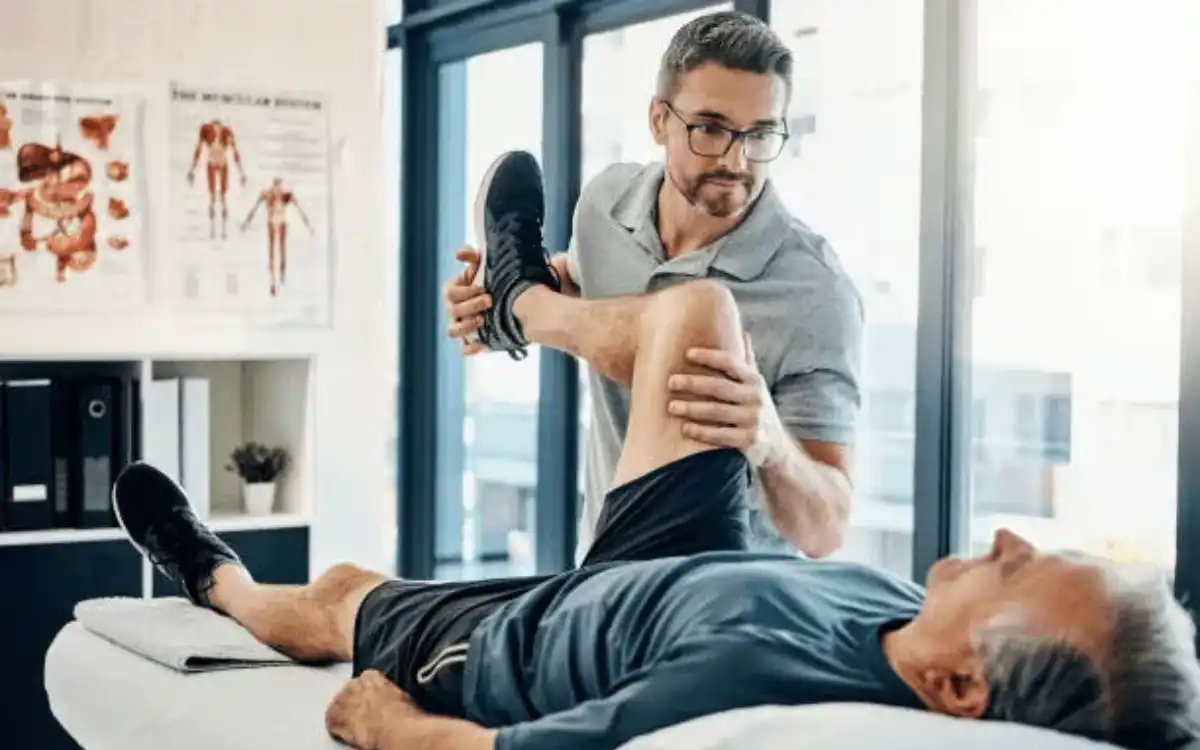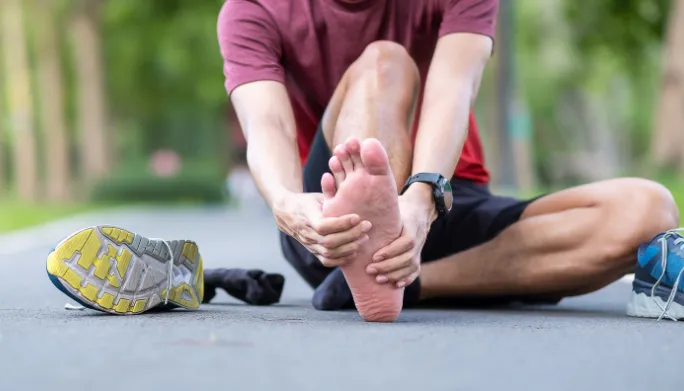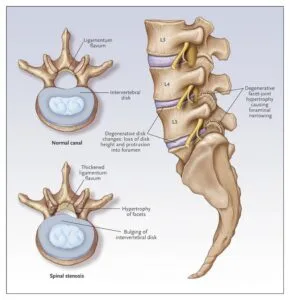OVERVIEW
Lumbar Stenosis
Spinal stenosis refers to narrowing of the spinal canals. It could affect the central canal, which is the hollow tube at the back of the spine through the which the spinal cord travels, or the transverse foramina which are the canals where the spinal nerves exit.
The process of narrowing the spinal canals (also known as secondary stenosis) is often a result of aging. This process can lead to the vertebral disks becoming shorter (degenerate), stiffening of the ligaments, and the formation of bone spurs. Stenosis can be caused by a combination of disc loss, hardening the ligaments, or bone spur formation. Stenosis can also be caused by trauma, spondylolisthesis and other post-surgical conditions.
Spinal stenosis is a condition that can cause severe pain due to blood flow congestion and mechanical compression. Low back or lumbar spinal stenosis can cause low back pain, as well as radiated pain that radiates into the buttocks or thighs. You may also experience leg weakness and tingling, as well as numbness or tingling.
Standing, walking and backward bending/extension can often make symptoms worse. Relief can often be found in sitting, forward bending, or unweighting the body. A decreased tolerance for walking is one of the most obvious signs of lumbar spine stenosis.
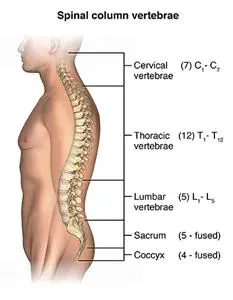
It may be beneficial to seek out conservative care (rehabilitation). Treatment may consist of stretching, strengthening, joint mobilization/manipulation, aerobic exercise, and activity modification. It may be beneficial to walk with an “unweighting” system or do aquatic exercises.
It is crucial to communicate with your doctor and your physical therapist.
